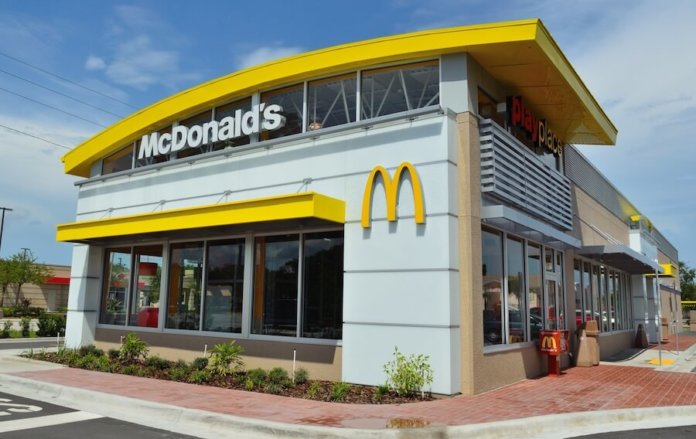
Some entrepreneurs have it and some don’t. It’s the ability to look at a business or opportunity and see not what it is, but what it could be.
This was the case when a traveling milkshake machine salesman named Ray Kroc visited the operation of two of his best customers, Richard and Maurice McDonald, in California in the 1950’s. There he saw a hamburger stand being run with more professionalism and efficiency than he had seen in his entire career.
But he also saw more than that. He tried to articulate what overtook him when he first visited McDonald’s:
“When I saw it working that day in 1954, I felt like some latter-day Newton who’d just had an Idaho potato caromed off his skull,” Kroc said. “That night in my motel room I did a lot of heavy thinking about what I’d seen during the day. Visions of McDonald’s restaurants dotting crossroads all over the country paraded through my brain.”
A Long Road To Success
Ray Kroc was born in Oak Park, Illinois on October 5, 1902. In his early years, Kroc saw both affluence and poverty within his own family. His father made a lot of money as a land speculator but lost it in the stock market crash of 1929.
After briefly serving as an ambulance driver in WWI, a young Ray Kroc earned a living as a salesman and piano player before taking on a sales job with Prince Castle Multi-Mixer, a commercial milkshake machine manufacturer. Kroc did very well for himself at first, however, when sales started to fall off, he found himself looking for a new direction and a better way to make a living.
“I can’t pretend to know what it is – certainly, it’s not some divine vision. Perhaps it’s a combination of your background and experience, your instincts, your dreams. Whatever it was, I saw it in the McDonald operation, and in that moment, I suppose, I became an entrepreneur. I decided to go for broke.”
He would become the furthest thing from broke.
Creating the Fast Food Franchise
What kept Kroc awake that first night wasn’t the food, it was the system in which the food was prepared and delivered. Up until that point, hamburger stands were widely viewed as the domain of bikers and unruly teenagers. What Kroc saw was a clean, efficient, and even wholesome place where a family could go to get fast and tasty food. And he saw how the system could be replicated all across the country. “I put the hamburger on the assembly line,” he once said.
After initial overtures to expand the business was thwarted by the McDonald brothers, they eventually relented and in 1955, in the Chicago suburb of Des Plaines, Illinois, Ray Kroc opened his first McDonald’s franchise. It was a success right out of the gate and the ambitious Kroc could barely wait to open more to other franchisees.
But just as McDonald’s reinvented the hamburger stand, Kroc was about to reinvent the franchise model. The normal way of doing business was to grant regional franchise rights to someone who would then have multiple restaurants within that region. But Kroc knew that for the model to work, the new McDonald’s owners would have to it his way every time.
“Perfection is very difficult to achieve, and perfection was what I wanted in McDonald’s. Everything else was secondary for me,” he once said.
By limiting new franchisees to one store at a time, he could better exert control in his quest for perfection.
The Battle For Control
The McDonald brothers had mixed emotions watching Kroc expand across the country. The franchise royalties that rolled in were certainly welcome. But they were losing control of the business that carried their name. This became even more evident when Kroc named himself President of the McDonald’s corporation.
In 1961, he bought out the brothers for $2.7 million, enabling them to each pocket one million for their efforts. And now with complete control over the operation, Kroc set out to take McDonald’s from popular local restaurants to a nationally recognized brand.
It was important to Kroc that the franchisees run their local operation according to the McDonald’s way so he could focus on the “air war”. Through the 1960’s and 70’s McDonald’s had one of the most recognized and successful advertising campaigns in the world. They created perhaps the most recognized corporate mascot in Ronald McDonald and blitzed the TV airwaves with commercials. One fast food competitor once grumbled that consumers were “so preconditioned by McDonald’s advertising blanket that the hamburger would taste good even if they left the meat out.”
Lasting Legacy
At the time of his death in 1984, Kroc had built McDonald’s into an empire of 7,500 outlets in the United States alone. He had franchises in 31 other countries which, all told, amounted to $8 billion in sales in the last full year of his life.
Nearly every other American fast food competitor that followed borrowed the model the McDonald brothers had invented and Kroc perfected on a national scale.
He long believed his success was not due to vision or talent, but rather sheer tenacity. This was reflected in a quote that nearly every McDonald’s executive had framed in his or her office:
“Nothing in the world can take the place of persistence. Talent will not; nothing is more common than unsuccessful men with talent. Genius will not; unrewarded genius is almost a proverb. Education will not; the world is full of educated derelicts. Persistence and determination alone are omnipotent.”









